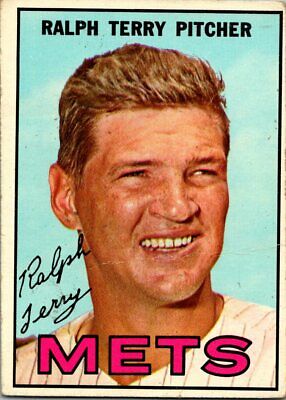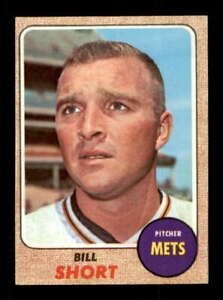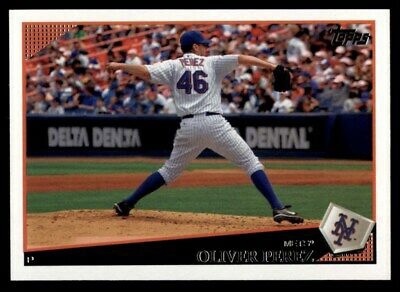Armwise, I’m a righty who hails from a family of natural-born lefties. Sis is sinister by nature. So was Mom. Dad trended to the left side as a youngster, but this horrified his grandmother and he was converted to righthandedness before he was old enough to effectively protest. He lived 87½ years with the illegible penmanship to prove he was a righty trapped in a lefty’s body.
But I’m a righty all the way, save for philosophically. From Seaver to Gooden to deGrom, I’ve always instinctively identified most closely with Mets righties of the starting pitcher genus, yet I have no bias when it comes to the big picture. I recognize a pitching staff is not complete without solid lefty penmanship. Today, even in the wake of righty Mets starter Max Scherzer’s Grapefruit League debut — a juicy 72 pitches thrown over five innings, yielding only a single earned run that doesn’t count — we find reason to salute a few southpaws who gave the Mets as much relief as they could, even if they couldn’t all be Tug McGraw.
You know who could be Tug McGraw? Tug McGraw! (Trick question.) You know why Tug McGraw could be unhittable? Because he had a screwball that confounded the art of hitting. You know who taught him how to throw it?
A righthander named Ralph Terry. See, left and right can work together. So can a pitcher known mostly for having been a Yankee and pitcher who came to prominence as a Met. Neither Tug nor Ralph were enjoying a particularly prominent phase of their lifetimes when their paths crossed as Mets in 1966. Tug’s first big moment, defeating Sandy Koufax after no Met had, was more than a year old. He wasn’t quick to craft a string of encores. Ralph’s big league peak was similarly past-tense, except much longer ago. In 1962, Terry went 23-12 for a world championship ballclub and he was the MVP of their seven-game World Series triumph. It marked a dramatic turnaround from two years earlier when “Game Seven” and “Ralph Terry” added up to “the Bill Mazeroski home run” that needs little elaboration.
By 1966, Terry was hanging on, which was a good description for most Mets who couldn’t be referred to as coming up. The Mets had a lot of hangers-on amidst their up-and-comers. Eleven appearances in ’66 produced a save and a loss for Terry. Two more in ’67 amounted to his big league exit. But in between, during the Florida Instructional League interlude of 1966, Terry and Tug got together. Ralph was around to discern how many competitive pitches might remain in his right arm if only it could figure out how to master a knuckleball — that and golf. Tug simply needed to hone his skills in a circuit designed for “brand new rookies and slightly used rookies like me who are having problems” — that and golf.
Pitchers of all ages and both dominant sides love to golf.
Say, the veteran mentioned to the youngster between juggling knucklers and Titleists, maybe you’d have some luck with the screwball. According to Tug in the helpfully titled memoir named for his signature pitch, Ralph “suggested that I turn the ball over when I pitched it, taking something off my fastball and turning my wrist in toward my body when I released the pitch. He showed me how it would spin, using a golf ball as a prop, and right there my screwball was born — on a golf course in Florida.”
It would take a while for Tug to master his new pitch (and for Met coaches to buy in), but once he got a good grip on it, McGraw and the screwball became synonymous. Consequently, the Mets bullpen blossomed once Gil Hodges planted Tug as the lefty late-innings complement to righty Ron Taylor in 1969, a year the Mets closed in the highest style possible. The Mets went to a second World Series four years later only after McGraw rediscovered his scroogie down the stretch (it had somehow scurried out the doggie door at the height of summer). And we can thank a pretty fair righthanded pitcher and golfer named Ralph Terry, who died on March 16 at age 86, for getting Tug and the rest of us to believe as we did. Deney Terrio billed himself as the man who taught John Travolta how to dance and got the syndicated show Dance Fever out of it. Ralph Terry was just helping out a young teammate as he himself was moving on.
We should also thank Tug’s singing son Tim McGraw for taking to Twitter and sharing the following anecdote on St. Patrick’s Day, because receiving an extra opportunity to think about Tug McGraw in the same week is like finding a four-leaf clover in each pocket of your warmup jacket:
His favorite holiday, really, was St. Patrick’s Day. He was very proud of “McGraw” and bein’ Irish. […] My uncle did a little research into our family and told Tug one day, “I don’t think we have quite as much Irish blood as you think.” It sort of pissed Tug off, and he just said, “[Bleep] you, I’m stayin’ Irish. It’s been good to me!”
However much Tug might have enjoyed March 17, 1968, by Opening Day, despite having pitched for the Mets at least some of each of the preceding three seasons, the 23-year-old would be down in the minors for the duration. “No argument from McGraw,” Tug third-personed in Screwball. “It was a good move, because in all honesty I hadn’t had enough time in the minors yet.” While Tug worked on turning the ball over in Triple-A Jacksonville (where during a previous stint he’d met the woman who gave birth to Tim; he did have some time in the minors), the Mets needed to fill whatever void he left in New York with another lefty. They did so, in part, with the veteran reliever Bill Short.
Apropos of his surname, Bill wasn’t a Met for long, although by recent Met reliever revolving-door standards, Short lasted a veritable lifetime: the entirety of the 1968 campaign. Historically, he occupies a couple of odd places for a franchise that’s always been a little bit out in left field. For one thing, Bill Short, who’d been in professional baseball since 1955, is the only player in Mets history you can’t call anything but a 1968 Met. I might not have bothered to look it up had it not been for what being a 1969 Met means.
I’ve always felt a little bad for Short and the eight other 1968 Mets who didn’t last with the club that one extra year. The rest arrived in Flushing somewhere between 1965 and 1967. Three — Jerry Buchek, Phil Linz and Billy Connors — reached the end of the line in ’68. Five — Dick Selma, Larry Stahl, Greg Goossen, Don Bosch and Don Shaw — found work with freshly minted expansion teams facing the endless miles of bad road the maturing Mets were about to be done with (though Selma would have his standing elevated by April when the front-running Cubs traded young Joe Niekro to San Diego to secure the former Met phenom’s services). It’s not like the 1969 Mets didn’t become the 1969 Mets without the nine 1968 Mets they cast off, and it’s impossible to determine whether the 1969 Mets would have gone as far as they did with them.
Still, talk about bad timing.
Bill Short (sometimes referred to as Billy, as players named Bill might be) resided somewhere in the middle of a cohort neither Bulova nor Armitron would have been anxious to sponsor. The Mets picked him up from the Pirates after Bill spent most of 1967 bringing his left arm back to life in the minors. Injuries had plagued him earlier in a career that never quite took off. His major league experience consisted of 35 appearances spread over four seasons that themselves spanned eight years. Yet here he was, of interest to the 1968 Mets for the reason many pitchers who don’t throw with their right arm are of interest to teams in any era.
“I want to see him in the bullpen,” Hodges said early in Spring Training. “I understand he can get lefthanded batters out.”
The siren song of the lefty reliever was enough to allow the 30-year-old southpaw to rise above stiff competition in a camp populated by young, live arms. Seaver was the known quantity. Nolan Ryan always drew attention. Jerry Koosman pitched his way into the rotation, shaking off his shaky ’67 auditions (Kooz, incidentally, was relieved in his first career appearance by Ralph Terry). But in the shadow of all that obvious talent, Short delivered 10 scoreless Florida innings, made the Mets and endured from April to September, accomplishing a niche that accounts for his second odd niche in Mets history.
In sixty seasons of Mets baseball, per Baseball-Reference magnificent Stathead tool, only thirteen pitchers have faced at least 100 batters in a given year and surrendered zero home runs. Zilch. Zippo. The first of these gopherless ballers? Why, Bill Short. One-hundred twenty-eight hitters came to the plate against Billy. None took him deep. Not only was it a franchise first, it would stay a franchise rarity. No Met would be as nimble at not allowing homers again until Paul Siebert in 1977. The roster of other slugger-unfriendly hurlers includes high-profile starters Ron Darling (as a rookie in September 1983), Pedro Martinez and Noah Syndergaard (both in years — 2007 and 2017, respectively — when their appearances were curtailed by injury) and a handful of shooting not-quite-stars (Jaime Cerda, Orber Moreno and Juan Padilla among the early 21st-century contingent). The best Met pitcher at not giving up a single home run, which is to say the Met who faced the most batters in a season without having to stand on the mound and watch his opponent circle the bases?
That it was a Met pitching in 1986 probably wouldn’t surprise you. That it was Doug Sisk might make you rethink the “boo” you just mentally formed at seeing the name Doug Sisk. Say what you will about Sisk, but be sure to add “Doug faced 312 batters, gave up no home runs and the Mets won the World Series.” Context and nuance is your call.
But Bill Short got there first. Interestingly, despite Gil Hodges finding him attractive on the basis of being a lefty reliever who could trouble lefty hitters, Short’s splits in 34 games coming out of the pen indicate a southpaw who came north to get out batters on each side of the plate. Lefties slashed .222/.308/.311 against Bill. Righties posted a line of .219/.307/.266.
Bill, whose February 2 passing at 84 surfaced within the baseball community only in the last few days, proved himself a representative major leaguer in 1968, and maybe he could have contributed to the team that was about to become the 1969 Mets. Alas, the Mets left him unprotected in December’s Rule 5 draft and the Reds snatched him up. Detailed splits of the type cited above were not readily accessible more than a half-century ago. Otherwise, one gets the feeling his new manager, Dave Bristol, wouldn’t have reflexively echoed Hodges from a year earlier. “Short can get out a lefthanded batter,” was Bristol’s limited assessment…because isn’t that what lefthanded relievers do?
Oh, you know who you can ask? The lefthanded reliever whose arm, we can cheerfully report, may very well be deathless. Oliver Perez is back in a big league camp, seeking to resume his MLB tenure as an Arizona Diamondback. Of course he is. We’d last seen Ollie in a Cleveland uniform in April, and then we read over the extended winter that Ollie was going to give it one more go in the Mexican League and then definitively hang it up this year. But why hang it up when you can hang around and get out a lefthanded batter? Ollie’s 40th birthday has come and gone. No reason he needs to.
Why, you may wonder, would we so embrace the idea of a little more professional success for Oliver Perez, considering that when he finished wearing a Mets uniform in 2010 we were collectively founding Uber for the express purpose of giving him a ride to the airport? Because if Ollie — who revived his fortunes by reinventing himself as a lefty specialist when we were still fuming that he wouldn’t consent to set himself right in Buffalo — makes the D’Backs, he automatically doubles the number of big leaguers in 2022 who can say they played as Mets at Shea. And as long Shea Stadium personnel continue to ply their craft on a major league playing field, then Shea lives. There’s Joe Smith, a lad with us in 2007 and 2008, who just signed with the Twins, and there’s Ollie. Ollie of the 2006-2010 Mets preceded Smith on the Mets, ergo Perez is potentially poised to reclaim his LAMSA mantle, which is to say the Longest Ago Met Still Active. We thought Ollie was all done in the majors. Silly us. Giving up is for kids.
Good luck, Oliver (unless you face us, of course). Good luck, Joe, a righty, but vintage Shea is vintage Shea, regardless of theme. And, while we’re dispensing good fortune, good luck to another veteran reliever, Mike Montgomery, signed by the Mets in February of 2021, only to be released in March of 2021. Mike has been granted his second Metropolitan shot via a minor league deal because guess what arm he throws with.
Hope, like lefties, spring eternal.










Doug Sisk???!!!
Slowly I Turn….
I don’t understand the lingering love for Oliver Perez (I feel it from GKR as well). I guess the brain shuts down traumatic memories as a self-defense thing.
I remember the late, great Marty Noble commenting on WFAN that the $36,000,000 contract Mets GM Omar Minaya gave to pitcher Oliver Perez was the worst contract the convivial Mr. Minaya ever negotiated for the Mets.
Do you remember when Perez would be sure not to step on the foul line after completing an inning? No, doubt, Perez won over even more Met fans when Perez, on the advice of his agent, the unfailingly venal Scott Boras, refused to go down to the minors and work on his stuff when Perez was stinking out the ballpark. Of course, by declining to visit wounded young American soldiers and Marines in a military hospital in Washington, DC. along with Luis Castillo and Carlos Beltran, Oliver Perez secured the respect of Met fans everywhere.
Hence, the nickname, “Oddball” Ollie Perez. Enjoy your well-financed retirement, Ollie. You are as “ beloved” as Vince Coleman and Jeff Kent as all-time “Met good guys.”
I’m 100% with you Seth. I have spent a pretty significant percentage of my life cringing at the mention of Oliver Perez’s name and/or likeness. Not as bad as another veteran lefty who was his Mets teammate, but still.
I’m not so shocked about Doug Sisk. I’ve always kind of liked him. He started his career strong – he was Jesse’s co-closer before Roger – and turned out not to have a closer mentality. Happens to lots of folks. He heard his share of boos in ’85. But he quietly had a really good season in ’86 as a middle reliever while being overshadowed by pretty much all his teammates. One of the all-time underrated Mets. I’d put ’86 Sisk in my bullpen in a heartbeat.
Ready for the worst news ever, just when you were grudgingly accepting the NL DH? Apparently the extra inning ghost runners are here to stay.
Great stuff–I actually remember most of it!
Poor Doug Sisk–he deserved better.
Also disgusted about MLB having the stupid, Little League
“ghost runners” horseshit again..
Like Manfred, ghost runners are another blight/curse on the game.
Sigh..
Was GREAT seeing DeGrom pitch yesterday!
Let’s Go Mets1
Speaking of left out, I wonder what ever happened to Michael “We just need to get him going” Conforto? Odd that he’s still unsigned.
I was very happy to hear Gary scold Keith the other day about the term ‘ghost runner’. The free runner they use is the exact opposite of a ghost runner. A GR is a runner who has EARNED his right to the base he occupies but needs to vacate for a legitimate reason (getting called in for dinner or it’s his turn to bat while playing 3 vs 4 or 4 vs 5 on the street). The runner they use in MLB now did NOT earn the base but IS actually standing out there. Okay, sermon ended.
Today’s game including an interesting line: W – deGrom. S – Scherzer. The main takeaway, of course, is that it’s spring training. But it also raises an intriguing scenario – say it’s June, the Mets rotation is unexpectedly bursting at the seams with great pitching, and Edwin Diaz folds yet again. Do the Mets dare ask Max Scherzer to do a John Smoltz at this stage of his career? Probably not, but it’s fun to think about.